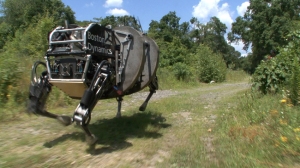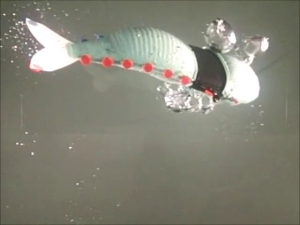Robotics has been in the commercial sphere for a long time from car factories to medicine and now it has taken a new approach in the from of “soft” robotic technology. This sub-field is a spin-off from bio-mimicking, a field that mimics nature. Biological systems are, therefore created/modeled after living organisms; however their nature and functions are improved and made more efficient with the mechanical elements and optimised to fit the habitat and associated functions within which this organism does.
So with the fact that robotics is inspired by living organisms and afterwards aligned with the habitats of the respected organisms; what exactly is the maritime potential? Soft robotics, while still new and developing has a lot of potential due to firstly, its build which is soft an flexible allowing for completion of different tasks at sea. The principle of soft robotics is to cover as much ground as possible regarding usability as components are easily modeled and re-modeled depending on the requirement. Along with this degree of modification the creation kit for it was released by Harvard University and Trinity College, Dublin Ireland.
Leading to the maritime application of this technology, the soft robotics technology can be used in the bio-mimicking of marine organisms for tasks in their habitat. For example, an octopus-shaped robot can be created on a modular foundation. Modular robots are kinematical machines with variable morphology; this means that robots of this nature are capable of rearranging the connectivity of their parts and changing their shape to adapt to the given circumstances.
A modular octopus robot, thus can be used in search and rescue operations where limbs can be used to move debris, wrecks etc and pull out stranded survivors. This build can also be used for maritime construction work and maintenance of structures such as oil rigs and ports. A research vessel can be accompanied by an octopus robot to conduct fisheries, oil exploration and most importantly naval research. An octopus robot can have sensors in the limbs for manipulating environment while navigation technology for movement and obstacle evasion.
Another example of implementing a modular robot is in the aforementioned naval research operations where submarine and mine detection can be done; with a fish robot this time. A fish-like robot can have a higher mobility as well as sensors for detection of certain signatures which accompany mines and submarines. (Sonar, radio frequencies etc) Fish robots can also be valuable for exploration.
Soft robotics, however are not the only types of robot technology which will benefit maritime as robotics not only is a revolutionising step for this sphere but also an enhancement to existing parts. For instance, the HULLBUG robot used to de-foul ship hulls. This robot is autonomous and uses a fluorometer to detect fouling and sensors to navigate obstacles. Fouling reduces a ship’s speed by 10% making it use more fuel by 40%. However this robot, in practice can save 15$ billion annually and reducing 1 billion tons in greenhouse gases.
Finally, a serious contribution to the maritime field is a design of Rolls-Royce; the unmanned cargo vessel controlled from the shore.
However, this vessel can introduce new legal regulations and legally shape maritime landscape in different ways. Such a vessel also can be expensive to develop and maintain. Legal issues start from the status of unmanned vessels, (no crews) which also raised questions on how to consider them from a more threatening tone; “Are they mines?” “Are they vessels?” Those issues are followed by 2x more factors associating with Maritime Zone and Law of Armed Conflicts issues. Maritime Zone issues talk about where can an unmanned vessel go in ways of having necessary clearance for navigation through some zones; hinting at illegal espionage. An example of this can be the exploitation of offshore controls and navigating into a zone the ship does not have clearance for.
Finally, unmanned vessels are also analysed in terms of presence of armaments on-board. No matter the purpose, all vessels are now, according to regulations are seen as potential danger along with the presence of unmanned drones therefore creating an association between the two.




